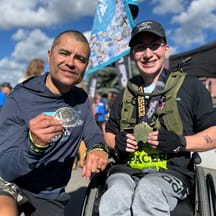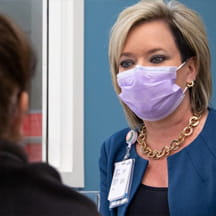As 1 of 10 Vaccine and Treatment Evaluation Units (VTEUs) in the U.S., Cincinnati Children's Hospital Medical Center has been testing the safety and efficacy of the COVID-19 vaccines now being administered. The hospital's Vaccine Research Center has been working with development companies for about a year on adult trials and last fall began conducting COVID-19 vaccine trials on adolescents.
Robert Frenck, M.D., director, Vaccine Research Center, professor of pediatrics in the division of infectious diseases and principal investigator, VTEU at Cincinnati Children's, leads the hospital's team conducting these trials, which he says should help attain federal licensing for COVID-19 vaccines for children 12 years and older by the time schools convene in fall 2021.
Children's Hospitals Today caught up with Frenck to discuss the adolescent vaccine trials and how they can help build trust in vaccine safety.
How are adolescent trials for the COVID-19 vaccine progressing?
We were part of the adolescent trial for the Pfizer COVID-19 vaccine, where we enrolled kids between the ages of 12 and 17—we were one of the first in the country enrolling kids ages 12 to 15. Throughout the country, there were about 2,000 in the 12- to 15-year-old group and about 600 in the 16- to 17-year-old group.
For the adolescent trials, we've completed enrollment, and all the kids have had two doses of vaccine. We're still in the process of compiling the adverse events and the immunogenicity. My impression is the adverse event profile has been very similar to what we saw for young adults; that is, if you're going to have an adverse event, it typically starts within 24 to 48 hours and typically lasts 48 hours or less. The common things we're seeing are the same in the adolescents as the young adults: headache, fatigue and localized pain at the injection site.
Generally speaking, COVID-19 illnesses have been much more severe in adults than children. Why do you feel it's necessary to vaccinate children against the virus?
There are two reasons to immunize the kids.
First, for direct protection of the kids. In the U.S., we've had more than 3 million children infected and more than 12,000 who've been hospitalized for COVID-19—they need to be vaccinated so they're not getting hospitalized or dying from the infection.
The other reason is to decrease spread of the virus. If children are not getting infected, hopefully they're not spreading anything to adults and older people who have a higher risk of getting a very serious illness.
The other thing is, there are 75 million people under age 18 in the U.S. That's a big part of our population who would be still susceptible if you didn't vaccinate them.
The timeline in bringing the COVID-19 vaccine to market is much shorter than typical vaccines. How were vaccine developers and researchers able to accomplish this without sacrificing safety?
I like to look at it as we've been able to telescope down the timeline.
If you look at development of a vaccine from phase one to phase three, the typical cost to the companies is somewhere between $300 and $500 million. Companies want to have some confidence their product is going to be effective before they move forward. In Operation Warp Speed, the government provided the funds to the industry partners so there wasn't the economic challenge—they knew they had the resources necessary to do the study.
Also, these platforms are not brand new. The mRNA vaccine was originally looked at for a cancer vaccine and the adenoviral vector vaccine has been around. We didn't have to start from ground zero. And the nice thing about these platforms is, they allow for vaccine development to go much more quickly—you can grow the virus for the adenovirus and you can make lots and lots of mRNA. That allows you to have a lot of doses quickly.
The number of hours people were working reduced the timeline. We were working seven days a week and 10 to 12 hours a day to accumulate and review the data. The Food and Drug Administration (FDA) was being provided information essentially in real-time, versus most clinical trials where the FDA gets all the information at the end.
It is important to note we did not cut any corners with safety. If you look at both the AstraZeneca and Johnson & Johnson vaccines, one of our protocols was holding or pausing rules. If those are triggered, the protocol paused, and we'd look to see if we need to change the protocol.
If we didn't care about safety, we would have just progressed right on through. People have had the misconception there were corners cut, but that's just not true—especially around safety.
Recent surveys show Blacks and Latinos are more hesitant to receive the COVID-19 vaccine than their white counterparts. One of your study participants, Melanie Mitchell, is a Black teen who has been very active in promoting the importance and safety of the vaccine. How important is her role in the larger cause of reducing vaccine hesitancy?
Melanie is quite an incredible young woman, she's phenomenal. Every time I hear her talk, I marvel to think she's 16 years old. Her message is important.
When I went into these clinical trials, it was important to me to make sure the population enrolled in the study was representative of Cincinnati. With the help of our community engagement group, we've explained throughout the community why this is important. And with those efforts, 26% of the participants in our adult trials were self-described as Black or Hispanic, which is representative of our population. I was happy about that.
I'm also happy that when we returned to community locations we've had people say, "I wasn't really thinking I was going to get the vaccine, but you answered our questions and were very straightforward with us; we realize it's important to do and we got vaccinated."
With all the long hours and hard work, those comments made it all worthwhile. We improved the vaccination rate, and I think we showed people why research is important—and that's been very rewarding.



